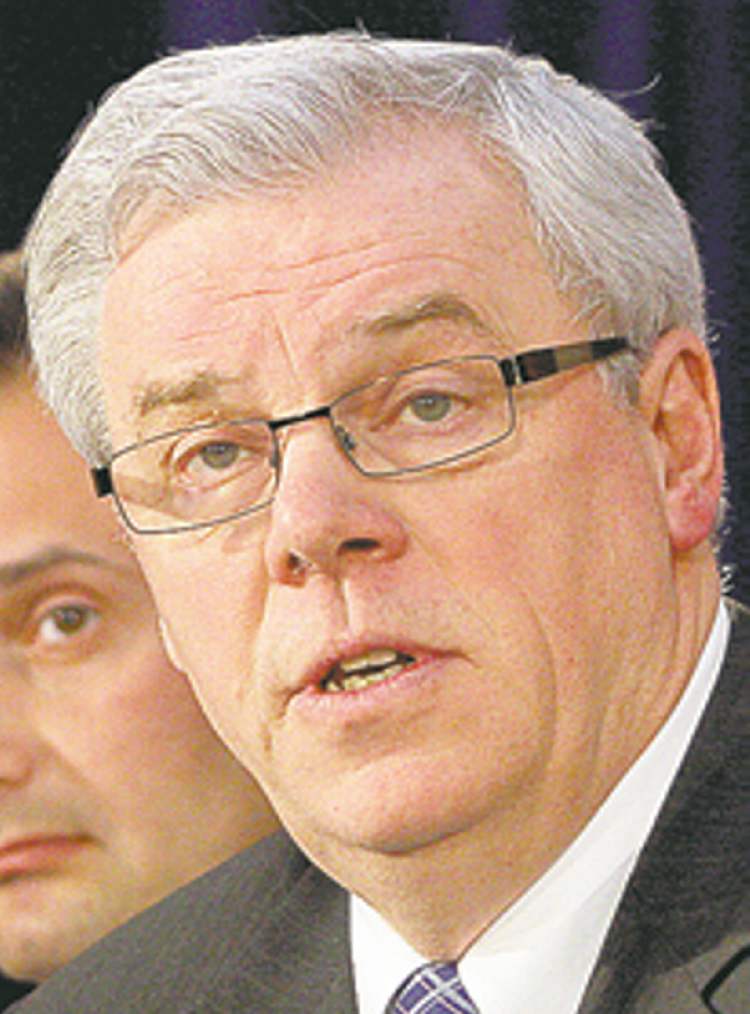Gap between city, province on transit still wide
Advertisement
Read this article for free:
or
Already have an account? Log in here »
To continue reading, please subscribe:
Monthly Digital Subscription
$1 per week for 24 weeks*
- Enjoy unlimited reading on winnipegfreepress.com
- Read the E-Edition, our digital replica newspaper
- Access News Break, our award-winning app
- Play interactive puzzles
*Billed as $4.00 plus GST every four weeks. After 24 weeks, price increases to the regular rate of $19.00 plus GST every four weeks. Offer available to new and qualified returning subscribers only. Cancel any time.
Monthly Digital Subscription
$4.75/week*
- Enjoy unlimited reading on winnipegfreepress.com
- Read the E-Edition, our digital replica newspaper
- Access News Break, our award-winning app
- Play interactive puzzles
*Billed as $19 plus GST every four weeks. Cancel any time.
To continue reading, please subscribe:
Add Winnipeg Free Press access to your Brandon Sun subscription for only
$1 for the first 4 weeks*
*$1 will be added to your next bill. After your 4 weeks access is complete your rate will increase by $0.00 a X percent off the regular rate.
Read unlimited articles for free today:
or
Already have an account? Log in here »
Hey there, time traveller!
This article was published 02/03/2012 (4961 days ago), so information in it may no longer be current.
The premier of Manitoba and the mayor of Winnipeg were all smiles Thursday as they stood side by side inside the city’s newest fire hall, but when the subject turned to rapid transit, the two seemed as far apart as ever.
Mayor Sam Katz was beaming because the province had agreed to fund 20 new fire and paramedic positions to staff the new facility in the rapidly expanding community of Sage Creek in southeast Winnipeg.
Premier Greg Selinger may have been smiling, in part, because the high-profile announcement in the provincial constituency of Southdale certainly won’t hurt Advanced Education Minister Erin Selby’s re-election bid in her riding. The two leaders went as far as suggesting to reporters Thursday their sometimes testy relationship was more a media creation than real.

“I don’t think you ever heard the mayor or the premier say we’re not getting along. As I’ve said before, we get along, we work together,” Katz said. “Can you think of a husband and wife who agree on every single thing?”
But when the two were asked separately at Thursday’s event about rapid transit, it appeared the issue remains a thorn in the relationship of Manitoba’s high-powered couple. And that’s far from good news for transit users who face a city-imposed 20-cent fare hike in June, one that’s intended to fund the city’s portion of the next stage in Winnipeg’s rapid transit development.
The 20-cent hike would raise about $6 million a year to invest in future rapid transit, such as the second phase of the southwest corridor that will eventually link Main Street with the University of Manitoba.
The $138-million first phase, a bus corridor that runs from Queen Elizabeth Way to Jubilee Avenue, is slated to open April 8. Building the second phase comes with a $275-million price tag. An upgrade to light rail over the entire distance — Katz’s stated preference — would cost about $700 million.
Katz took issue with a reporter’s assertion Thursday that there was no political will to get the second phase built. “I would totally disagree with that statement. I think there is political will, absolutely there is political will,” he shot back.
But he emphasized that commitment to the project means little without everyone — the city, the province and Ottawa — placing their money on the table. “You may be committed to building a new home but if you don’t have the funds for a 25 per cent deposit and qualify for the financing, guess what? You’re not building.”
The NDP government has not hidden its displeasure about the looming fare hike, which would force bus riders to pay a proportionately high portion of rapid-transit development and likely discourage transit use.
Selinger said Thursday he can’t stop the city from hiking fares. But that doesn’t mean the city will gain much by raising them. Right now, the province shares 50-50 with the city the cost of wiping out Winnipeg Transit’s annual operating deficit. If the city collects more in fares, transit’s deficit will go down.
While Katz wants to take the extra money raised by the fee hike to fund the transit-corridor project, that’s unlikely to happen. “They can raise (fares) as much as they want. But our formula funds (operating losses) 50-50. We’re not prepared to change the formula. It’s the best formula in Canada,” the premier said.
Selinger said Thursday a new federal infrastructure program, which could be in place in a year’s time, would be an appropriate mechanism for funding rapid transit. And he reiterated tax-increment financing is another source of funds.
larry.kusch@freepress.mb.ca



